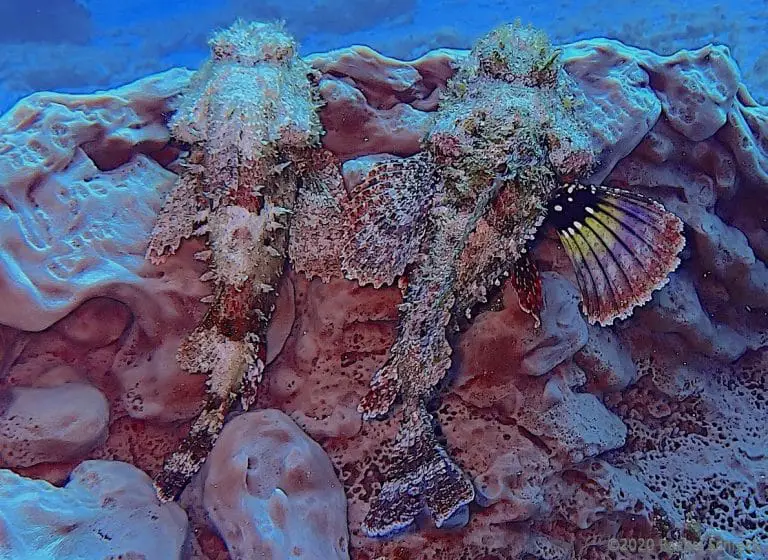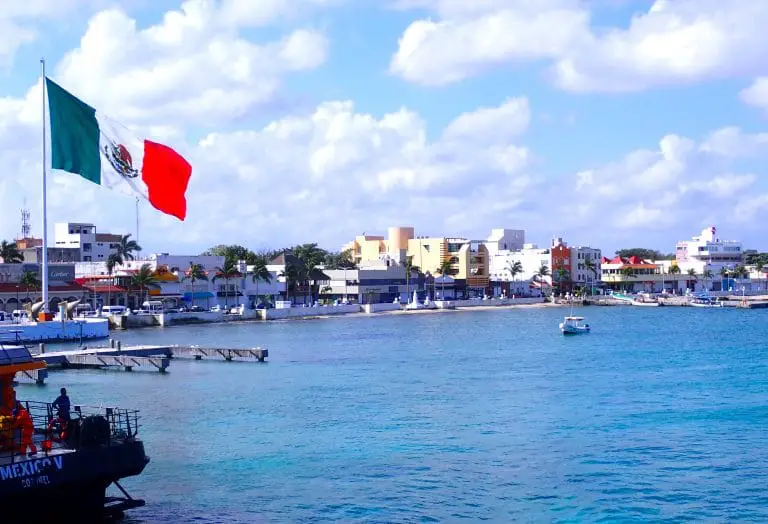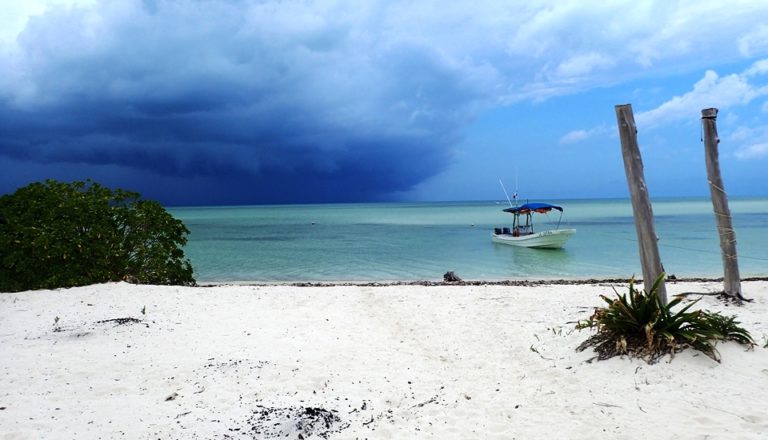Cozumel Marine Life: Eggs and Nesting Styles
Diving in Cozumel these days, I swear a sperm whale could swim right over me and I’d hardly notice. I’m too busy with my nose in the reef, looking for tiny spotted cleaner shrimp, lettuce elysia sea slugs, and blennies.
Cozumel is a great destination for fans of macro marine life. In addition to numerous varieties of cleaner shrimp, sea slugs, sea snails, crabs, and juvenile reef fish, focused divers and underwater photographers can often find clutches of tiny marine eggs – either being tended to by an adult guardian or left alone to develop and fend for themselves.
Over time, it isn’t just tiny marine animals themselves you’ll get better at finding, but their eggs, too.
The more cracks and crevasses of Cozumel’s dive sites you peer into, the more mysterious marine eggs you’ll surely find, as well.

Usually, these intricate patches, sacks, or cases full of marine eggs are just left there on their own. No marine mom or dad anywhere in sight.
This always leaves me curious. What kind of eggs are they? How long do they take to hatch? What kind of fish or sea slug will come out of them? Are they even marine animal eggs at all?
10 Marine Species Eggs Often Spotted in Cozumel
Over the years of diving and taking loads of underwater photos of Cozumel’s macro marine life – and then doing some of that classic armchair marine bio research with my favorite set of Reef Creature ID books that I mention here a lot – I’ve learned a little about some of the most common egg-layers in this stretch of the Mesoamerican barrier reef.
Here’s a quick – and very incomplete – list of some common species with marine eggs and their egg brooding or tending behavior you’re likely to encounter when scuba diving in Cozumel.
Sergeant Major Fish and Their Colorful Egg Tending
Sergeant Majors are plentiful coral reef fish in Cozumel, and very common to see when diving.
So common, in fact, you might not even notice them that much until you see them busily guarding a mass of their bright purple eggs.

If you notice a scene like this, keep a good distance away and hang out for a while to watch the fish’s behavior.
The sergeant major fish tending to the eggs is the male and usually turns a darker blue color during this guarding phase.
While not as (seriously) aggressive as his longfin– or three-spot damselfish cousins, he will let you know if you’re getting too close by darting out away from the eggs a bit and seeming to warn you away.
Best for everyone – especially those precious eggs – to not get too close and disturb them too much, anyway. Just take a quick mid-range picture (I used a zoom and crop, here) and then move along with your dive group.
Queen Triggerfish Tend to Their Sandy Nests
The Queen Triggerfish is another of Cozumel’s most common reef fish but among her most beautiful.
A large, predominantly bright blue fish with lovely color patterns and flowy, graceful fins, the queen triggerfish typically goes about its business and calmly avoids divers.
That was why I really took notice the first time I saw a queen triggerfish standing guard over a small divot or depression in the sandy bottom along a shallow part of the reef.
I was surprised it didn’t swim away, and then realized it was pretty intently focused on that very specific area of sand…so it must be a nest of eggs.

Triggerfish are known to carefully guard their nests, and continually ‘blow’ water onto the clutch of many thousands of eggs, as a way to keep them all rotated, cleaned, and with an abundant amount of refreshed oxygen.
The Caribbean queen triggerfish will charge you if you get too close, but is nowhere near as aggressive as the related titan triggerfish that is legendary in Palau and other tropical Pacific dive regions for charging and biting divers – even those keeping a wide berth (trust me on this one).
Flamingo Tongue Sea Snail Eggs Are On Their Own
Of course, I can barely get through a post about Cozumel macro without including my favorite little macro muse, the flamingo tongue sea snail.
Admittedly, photos of these colorful snails are pretty easy pickings here these days, but their endless variation of patterns and behaviors are just so cool to watch and – through dive photos – to review over time.

This was probably one of the earliest pictures I took of a flamingo tongue where I realized it was laying down a tidy formation of these translucent white eggs.
Each of these small pearly white egg sacks is in turn filled with many many more, that will eventually develop and hatch on their own, with no adult intervention.
Elkhorn Coral Crab Clutches Eggs
Here’s an example of a critter with greater parental instincts.
This elkhorn coral crab is a truly tiny little critter (1cm) that lives – you guessed it! – in and on the stony skeletons of elkhorn coral colonies.

Elkhorn coral crabs are not easy to spot at first, and less easy to take a clear picture of, so getting a decent image of one with a clutch of eggs that it’s holding close to its abdomen, and guarding with its front claws was pure luck. For me, anyway.
Crabs in this state are known as berried (rather than pregnant), and typically release the eggs away and into the ocean water when they’ve developed enough to scatter and hopefully survive on their own.
Cozumel has Conch Eggs By The Millions
The first time I saw one of these, I thought it was trash – namely an old air filter, perhaps from a passing boat.

But luckily I was with one of the many skilled and knowledgeable divemasters in Cozumel, and he explained that it was an egg case, left by a conch. Cool!
Some years later, I stumbled on a conch, caught in the act of depositing its egg case in some cozy fire coral.

I was scouring the bottom, of course, and looked up to see this happening right in front of me.
It surprised me, so I just took a quick photo of the very large conch-type snail depositing its egg case, and moved along. [Please forgive me, here. I’m just not sure exactly which type of conch this is, but I’m now reasonably sure it is not a queen conch. If you know, please email me! I think it might be a horse conch, or maybe some kind of whelk.]
Honestly, I’ve done a lot of amateur digging on this, and there are slightly different egg cases made by different varieties of conchs and whelks.
The queen conch is common to see diving in Cozumel, but solid information from sources like this fascinating conch farming training video from the Florida Atlantic University, confirms the queen conch lays a much different style of case or sack.
Queen conch egg masses are deposited right on the sand, and look more like spaghetti. The are much more pliable, and quickly get coated with and obscured by sand.

No matter the form factor, these large gastropod egg masses typically have many thousands of potential little conch eggs inside, so leave them alone!
Yellowhead Jawfish – Cozumel’s Main Mouthbrooder
Pretty and small-ish (about the size of a clothespin), yellowhead jawfish are pretty common to see while diving in Cozumel, especially along shallower reef dive sites like Yucab, Francesa, and Tormentos.
Jawfish create small holes in the sandy areas, often just a short distance away from the base of a shallow reef.
They hover and dance in the water above these burrows until startled or approached. Then quickly, but very gracefully, dip back down into the hole, leaving just their faces exposed, until the coast is clear.
Jawfish are one of several fish species that use the “mouthbrooding” technique to guard and develop their eggs.

The male jawfish keeps the large brood of eggs in its mouth, often rotating them and almost “spitting” them out and back in – likely to aerate them and give all the viable eggs somewhat equal tending.
Spotted Cleaner Shrimp
Various varieties of marine cleaner shrimp are among my favorite underwater macro photo subjects, and Cozumel has a lot of them. See here for a full post on various Cozumel cleaner shrimp.
Probably the easiest to come across is the basic Spotted Cleaner Shrimp, often living – or visiting – in symbiosis with a sea anemone.

Spotted cleaner shrimp are small (on average, they’re about the same size as a 3cm paperclip, or smaller if juvenile), but they are large enough to see some amazing detail – including whether or not one is “berried” – or has a belly full of little eggs, like the one above.
Cozumel Splendid Toadfish – Good Tad Dad
The Cozumel splendid toadfish gets a lot of love on this site, and for good reason, as it’s one of the island’s several amazing endemic species, and kind of the local mascot for Cozumel diving.
Over the years, I’ve even been lucky enough to spot Cozumel’s splendid toadfish babies on a couple of occasions.

Here you can see my quick snapshot of a small pile-up of cute little toadfish faces staring up, off to the left of their protective papa.
If my research is correct, the adult male usually attracts one or more females to lay eggs that stick to the inside wall of his suitably located and protected small cave-like enclosure.
The adult male then guards the eggs until they are viable juvenile fish, capable of swimming off and fiding their own way.
To read more about the Cozumel splendid toadfish, please also read the full species feature post, here.
Dark Mantis Shrimp
Mantis shrimp are not all that easy to find in Cozumel, but they are around.
I have seen the scaly-tailed mantis shrimp – one of the “spearing” mantis shrimp types – with some regularity. They live in tightly packed tunnels, usually out in sandy areas. They use sharper spear appendages to pierce their prey.
And then there’s this little guy – I think it’s called the dark mantis shrimp, as per my favorite “bible” of Caribbean Reef Creature ID books.
The dark mantis is in the “smashing” mantis shrimp category, meaning it uses a fast and powerful punch to smash its prey.
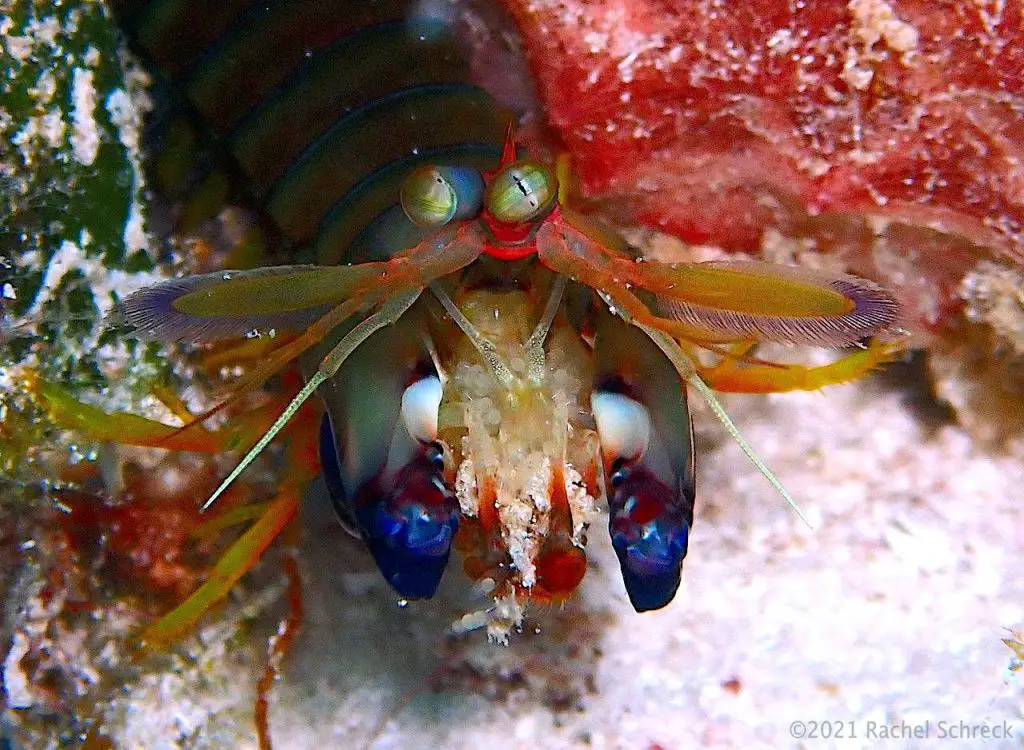
I find all mantis shrimp to be quite anti-social and camera-shy, so I loved getting a good glimpse of this one clutching a bunch of teensy eggs.
Green and Loggerhead Sea Turtle Nesting in Cozumel
Of course, a common favorite marine species in Cozumel or anywhere, for that matter, is the sea turtle.
Green sea turtle and loggerhead sea turtles swim among our reefs and also return to the eastern and southern beaches of Cozumel to lay thousands of eggs each summer.
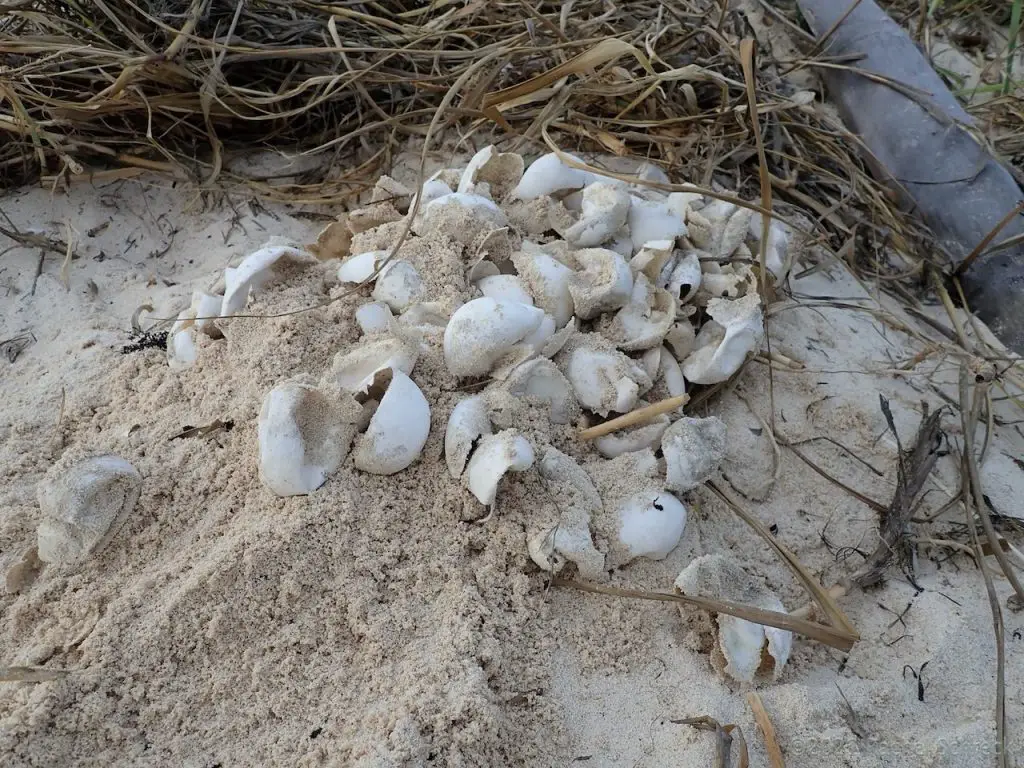
Large adult sea turtles lumber up onto the beach and dig deep holes using their hind flippers, into which each deposits up to 100 eggs.
The mother turtle covers the eggs with sand and pats down the nest using the belly side of her carapace, and then returns to the sea – leaving the eggs to fend for themselves.
About 3 months later, the eggs hatch on their own. The hatchlings usually emerge at or after sunset and make their way to the ocean, and hopefully continue the cycle.
If you love sea turtles, be sure to bookmark this comprehensive post on all of Cozumel’s resident sea turtles, where to see them, and how to help in our local conservation efforts when you visit the island.
Marine Eggs in Cozumel – Potent Macro Marine Life
Clearly, child-rearing is a wee bit different on the coral reef.
Divers here have no shortage of underwater animals to admire and photograph. Some of the most interesting, but often overlooked, are the numerous macro marine life species.
When you’re diving in Cozumel, keep your eyes peeled for these examples of eggs, and the mothering or fathering or guarding or tending behaviors that may or may not be evident.
And whatever you find, please leave it alone!! These little critters are having a hard enough time without us idiots poking around for a better look.
Just observe, take photos from a respectable distance, wish them luck, and move along.
If you like this post or are interested in other marine life you can frequently see when scuba diving in Cozumel, please check out all the other posts in the “Cozumel Diving” category.
Also, if you’re just getting started with
- Easy to use
- Easy to pack
- Easy on the wallet
- Durable, waterproof, dustproof
Learn those critters!




